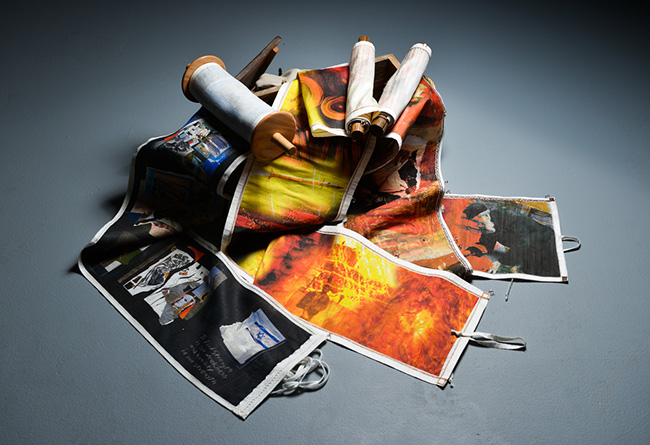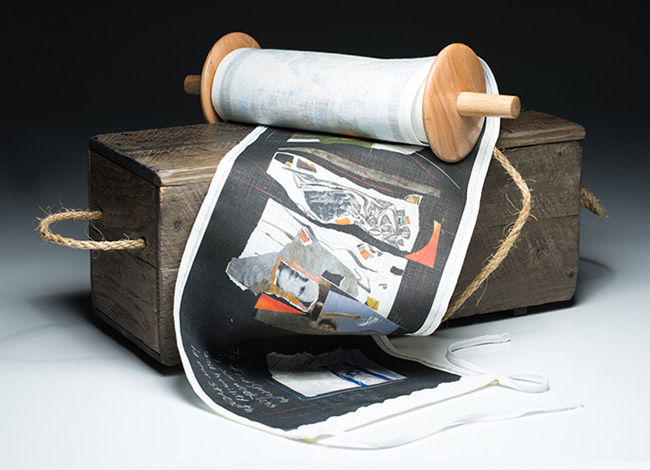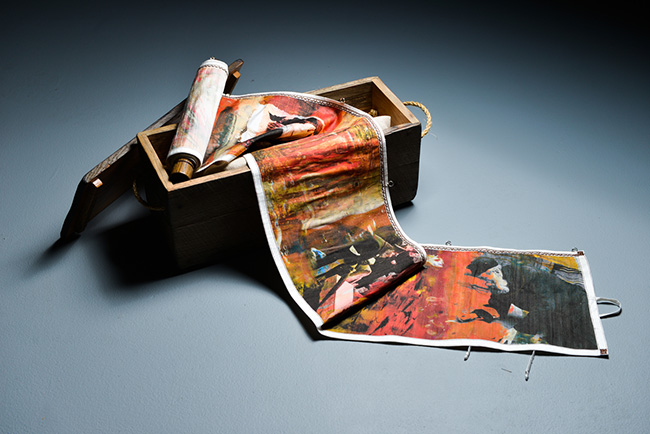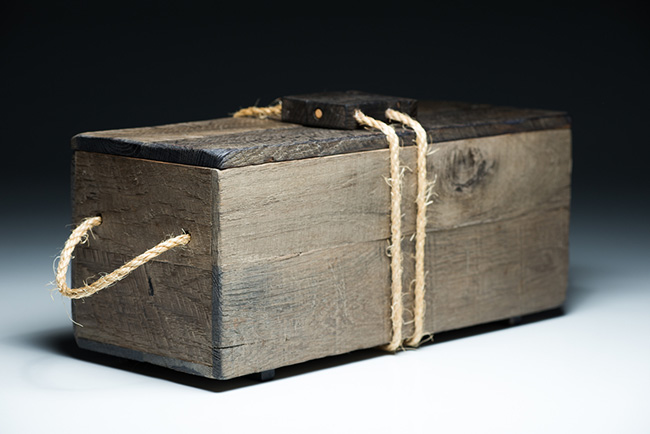Gallery › Boxes › Post-Holocaust Casket and Scrolls

Post-Holocaust Casket and Scrolls: From Warsaw Ghetto to Gaza War
The dictionary defines a casket as a wooden box for a corpse or a small case or chest for jewels or other valuables.
This is an apt metaphor for art inspired by Jewish history from the Holocaust to the state of Israel. Nearly 6 million Jews were murdered by the Nazis and their local sympathizers during the genocide. But a saving remnant of activists was able to preserve and nurture the innate creative brilliance of the Jewish people in their ancestral home of Israel.
Although Israel has one of the strongest and most technologically advanced military forces in the world, many of its leaders and soldiers are themselves the children, grandchildren, and great grandchildren of the survivors of WWII. The idea of total annihilation is a recent historic reality for them — not some kind of abstract or academic construct.
The first scroll depicts the agony and heroism of the Warsaw Ghetto. About 400,000 Jews were confined to approximately 100 square blocks of the Polish capital city. From January 18th to May 16th, 1943, a few hundred ragged Jewish ghetto fighters with a handful of light weapons held off the might of the German Army for nearly four months. In the end, virtually all the Jews perished in the Warsaw Ghetto or were deported for extermination to a Nazi death camp.
The second scroll depicts the dual reality of contemporary Israeli military power with the traditional sense of Jewish marginality. Robust images of Israeli soldiers, tanks, and fighter planes are juxtaposed with archival photos of innocent and powerless Jews murdered in the Holocaust.
The third scroll depicts the frightening and ironic reality of the 2014 Gaza War. The first half of the imagery shows Arab missiles hurtling towards Jewish civilian targets. The second part shows Israeli anti-ballistic missiles from the “Iron Dome” shooting down the enemy projectiles. The irony is that the Israeli army voluntarily left Gaza almost seven years before the unprovoked war by radical Islamic militants. These self-named “freedom fighters” put their own women and children by their missile installations to provoke attacks by the Israeli military. They wanted to create Arab “casualties” for an increasingly anti-Zionist world press.
These durable artifacts are easily shipped and ready for exhibit. They catch and preserve the Jewish zeitgeist for both today’s and tomorrow’s museum audience.
Podcast: Unfolding images from the Warsaw Ghetto to the present
A conversation with Mark Noll and Nancy Niss (both creative collaborators on the project)
About Mark (artist, craftsman, curator)
http://www.floridacraftart.org/featured/dia-de-los-muertos/
https://downtownstpete.com/carving-and-consciousness-with-mark-noll/
About Nancy (artist, seamstress, clothing designer)
https://www.linkedin.com/in/nancy-niss-b9a90711




Technical Information
Wooden Box made of distressed lumber: 17.25"L x 6.75"W x 7.25"H
Warsaw Ghetto Scroll printed on Dupoioni silk: 107"L x 9.75"W
Passport to Israel Scroll printed on Dupoioni silk: 200"L x 9"H
Gaza War Scroll printed on Dupioni silk with a rough, irregular weave: 107.75L" x 9"H
Related Content
Why I Require FBI Agents to visit the Holocaust Museum by James B. Comey, Washington Post
The Warsaw Ghetto: A Battle for the Ages by Abraham Peck (distinguished historian of modern German history, former director of the Houston Holocaust Museum, and son of Holocaust survivors)
Nor Will Our Deaths Be Meaningless: The Destruction of the Warsaw Ghetto by David Kriebel (Independent Scholar and Christian)
Israel: The Miracle by Paul Johnson (distinguished British historian and journalist)
May 1998, Commentary Magazine
